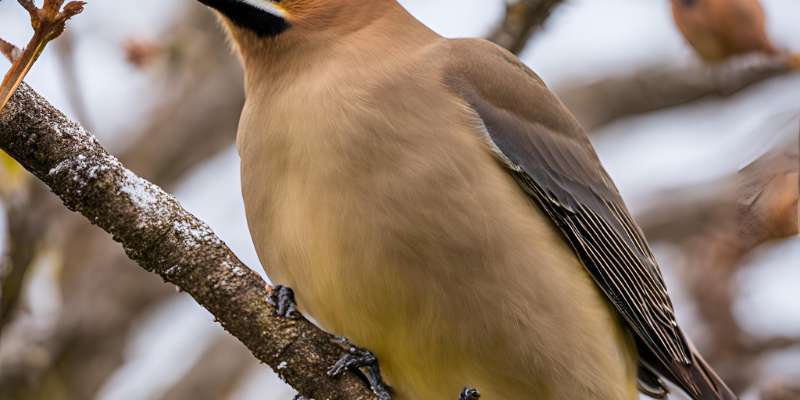Cedar Waxwings are not considered rare. They are quite widespread across North America.
These birds are known for their distinctive appearance and social behavior. Cedar Waxwings are a sight to behold with their sleek feathers and unique markings. They are often seen in flocks, feeding on berries and insects. While not rare, their presence can be seasonal, making them more noticeable at certain times of the year.
They prefer habitats with abundant fruiting trees and shrubs. This makes gardens, parks, and forests ideal spots to find them. Understanding their behavior and habitat can help you spot these beautiful birds more often. So, are Cedar Waxwings rare? Not really, but spotting them can be a delightful experience.
Introduction To Cedar Waxwings
Cedar Waxwings are beautiful birds. They have soft feathers. Their color is brown and gray. They have a black mask over their eyes. The tips of their wings are red. Their tails have yellow tips. They are known for their sleek look.
They are small. About 6-7 inches long. They weigh about 30 grams. They have a short neck. They have a crest on their head. They are social birds. They often travel in groups. They eat berries and insects. They have a high-pitched call. It sounds like “see-see-see”.
They live in North America. They prefer open woodlands. They are often near water. They can be found in parks. They like areas with lots of trees. They migrate in winter. They move to warmer areas. They are common in cities too. They are not shy of people.
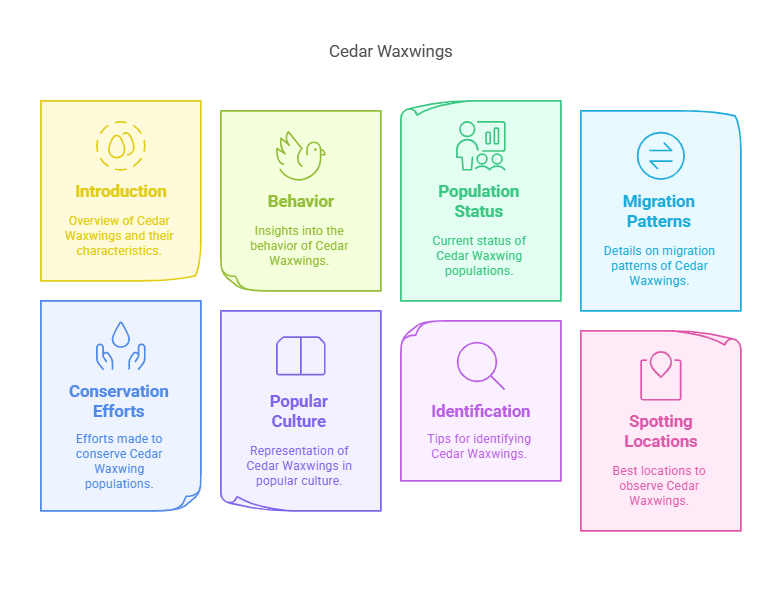
Behavior Of Cedar Waxwings
Cedar Waxwings love to eat fruit. They search for berries and small fruits. They also eat insects. You can see them catching bugs in the air. In winter, they depend on berries. In summer, they enjoy insects and fruit. They eat a lot every day. This helps them stay strong and healthy.
Cedar Waxwings build nests in trees. They use twigs, grass, and other soft things. The female lays up to 6 eggs. Both parents help feed the chicks. The chicks grow fast. In a few weeks, they are ready to fly. This happens in late spring and summer. Many pairs can nest close together. This helps protect them from dangers.
Population Status
Cedar Waxwings are not very rare. Their population is stable. There are millions of them. They can be found in North America. They live in forests and woodlands. They also visit gardens. These birds are known for their soft calls and beautiful colors.
Cedar Waxwing numbers have been steady over the years. No major declines have been noted. In the past, their numbers were also good. They have adapted well to different environments. This helps them survive and thrive.
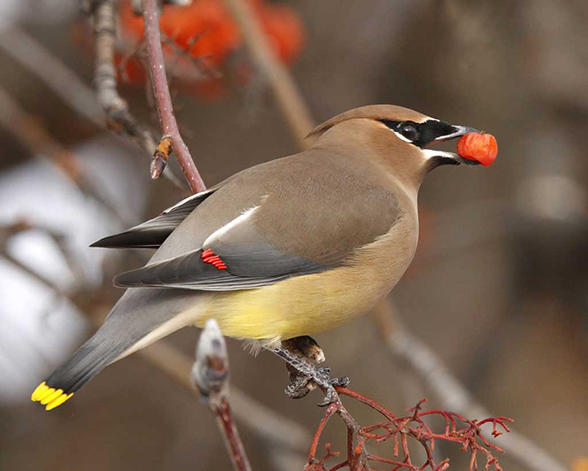
Credit: debspark.audubon.org
Migration Patterns
Cedar Waxwings are not rare but their migration patterns can vary. These birds migrate in flocks, often seen in North America.
Seasonal Movements
Cedar Waxwings move with the seasons. They travel in flocks. These birds often fly south in winter. In summer, they head north. Their journey is long and tiring. They look for food and warmth. The birds follow the berries. They love to eat fruit. Their flight paths can change each year. Weather can also affect their routes.
Factors Influencing Migration
Food is a key factor. Cedar Waxwings seek areas rich in berries. Weather also plays a big role. Cold weather pushes them south. Warm weather pulls them north. Safety is another concern. They avoid places with many predators. The birds need safe resting spots. Their migration depends on these elements. Changes in the environment can alter their patterns.
Conservation Efforts
Cedar Waxwings are not considered rare, but they still need protection. Conservation efforts help keep their population stable. One key measure is to protect their habitats. This involves preserving forests and planting more trees. Keeping these areas safe is crucial for their survival.
Birdwatchers play an important role in conservation. They help track Cedar Waxwing numbers. Their observations provide valuable data. This helps scientists understand the bird’s status. Birdwatchers also spread awareness about these birds. They encourage others to care for them too.
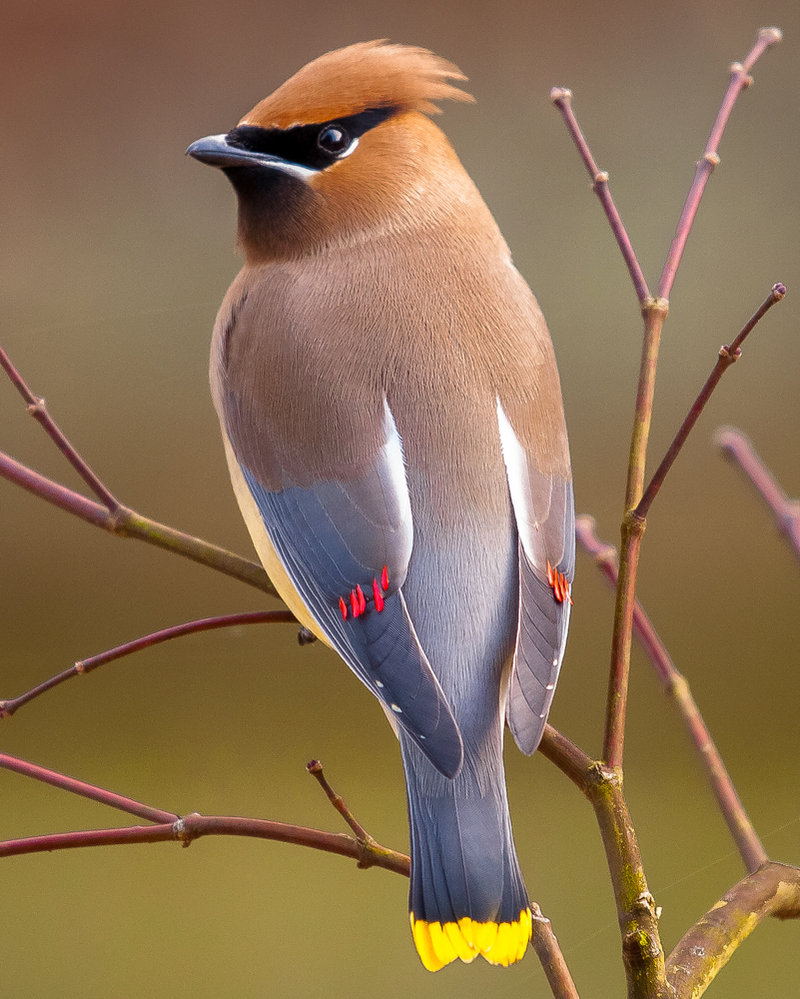
Credit: www.animalspot.net
Cedar Waxwings In Popular Culture
Cedar Waxwings often appear in art. They are symbols of beauty and grace. Many artists love to paint these birds. Their unique look and colors make them special. Waxwings stand for joy and harmony. Some believe they bring good luck.
Cedar Waxwings appear in books and poems. Writers use them to show peace and love. These birds often inspire stories. They are mentioned in old and new works. Their gentle nature makes them a favorite.
Identifying Cedar Waxwings
Cedar Waxwings have a sleek, brownish-gray body. Their head has a black mask. They have a crest on top of their head. The wings are gray with red tips. Their tail is short with a yellow tip. These birds have a unique, high-pitched call.
Field Marks
Cedar Waxwings have a distinct look. Their belly is pale yellow. They have a black line through their eyes. Their tail ends in a yellow band. Red tips on wings are noticeable.
Comparison With Similar Species
Cedar Waxwings can be confused with Bohemian Waxwings. Bohemian Waxwings are larger. They have a gray belly. Their tail has a white band. Cedar Waxwings have a yellow belly. Their tail has a yellow tip. Their head crest is similar. Their calls are different.
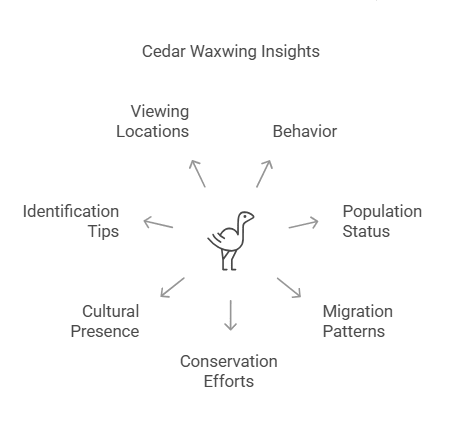
Where To Spot Cedar Waxwings
Cedar Waxwings are not extremely rare but can be elusive. Spot them in fruit-bearing trees and shrubs. Look near rivers or wooded areas for better chances.
Top Locations
Cedar Waxwings can be seen in many places. They love open woodlands and fruit-bearing trees. Parks and gardens with berry bushes are great spots. Look near streams and rivers too. They often gather in large flocks.
Best Times For Viewing
The best time to see Cedar Waxwings is during the spring and summer. They are very active in the early morning. You might also spot them in the late afternoon. In fall and winter, they move to find food. Look for them in areas with lots of berries.

Credit: www.allaboutbirds.org
Frequently Asked Questions
Are Cedar Waxwings Endangered?
No, cedar waxwings are not endangered. They are classified as a species of least concern. Their population is stable and widespread.
Where Can You Find Cedar Waxwings?
Cedar waxwings are found across North America. They inhabit forests, orchards, and suburban areas. They prefer areas with fruit-bearing trees.
What Do Cedar Waxwings Eat?
Cedar waxwings primarily eat fruit and berries. They also consume insects, especially during breeding season. They are known for their fruit-eating habits.
When Do Cedar Waxwings Migrate?
Cedar waxwings migrate in late fall and early spring. They move to warmer regions in winter. Migration patterns can vary based on food availability.
Conclusion
Cedar Waxwings are not as rare as some might think. Their beautiful plumage and social behavior make them fascinating. You can often spot them in flocks, feeding on berries. They migrate, so their presence varies by season. Watching for them can be a rewarding experience.
Pay attention to their calls and feeding habits. Observing Cedar Waxwings can enhance your bird-watching adventures. Keep your binoculars handy and enjoy the sight of these lovely birds. Happy bird-watching!

